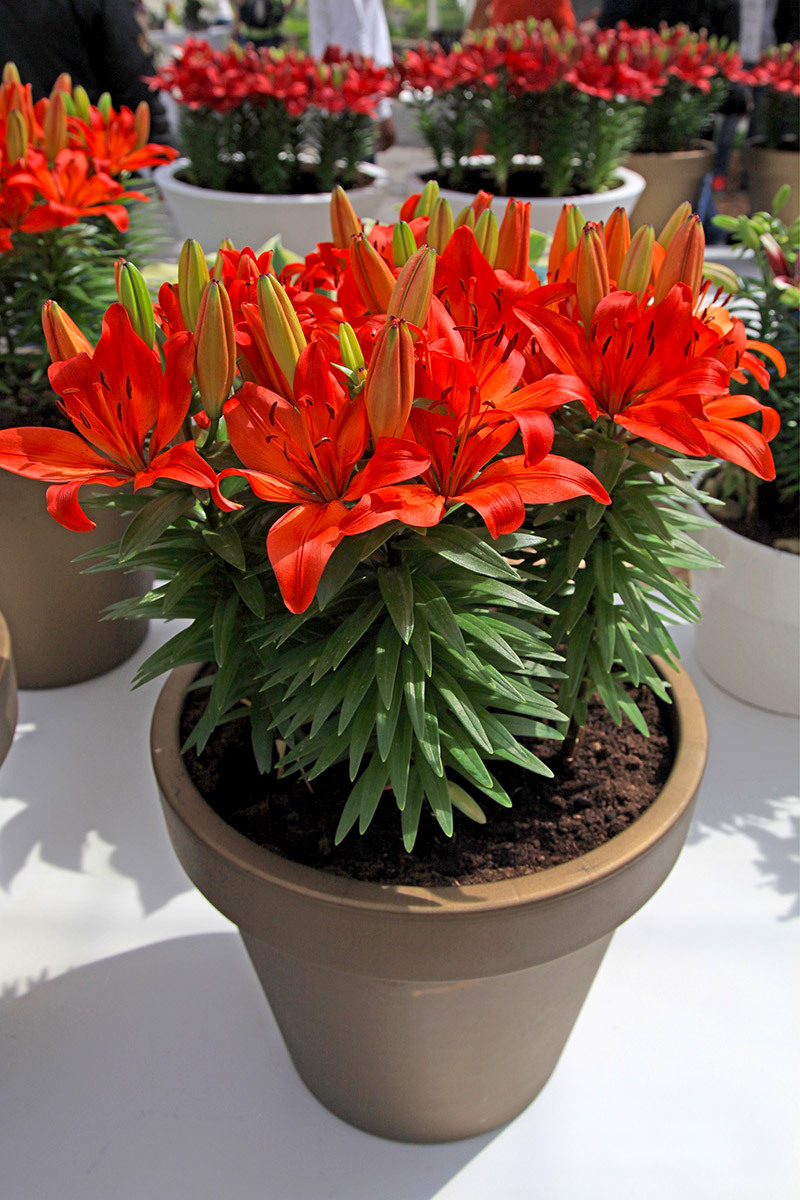Unlock Secrets to Successful Orchid Maintenance
Posted on 17/08/2025
Unlock Secrets to Successful Orchid Maintenance: An In-Depth Guide
Orchids captivate plant lovers with their delicate beauty, vibrant colors, and air of exotic mystery. Despite their popularity, orchid care remains a puzzle for many. Mastering the art of successful orchid maintenance can elevate your indoor garden and reward you with months--sometimes years--of spectacular blooms. In this comprehensive guide, you'll unlock the secrets to nurturing healthy, long-lasting orchids, transforming your plant care challenges into flourishing success stories.

Understanding Orchids: The Foundation of Effective Orchid Care
To care for orchids effectively, it's essential to learn about their unique characteristics. Orchids belong to one of the largest plant families, boasting over 25,000 species. These fascinating plants are found all over the world, from tropical rainforests to arid deserts. Despite their diversity, most common household orchid species share similar maintenance requirements.
Common Household Orchids: Know Your Plant
- Phalaenopsis Orchids (Moth Orchids): The most popular for beginners--easy to care for and bloom frequently.
- Cattleya Orchids: Known for their vibrant, fragrant flowers.
- Dendrobium Orchids: Beloved for their dramatic, cascading blooms.
- Oncidium Orchids (Dancing Ladies): Recognized by their feathery, brightly colored flowers.
Tip: Identify your orchid species to tailor your maintenance routine for the best results.
Unlocking the Orchid Life Cycle
Unlike most houseplants, orchids experience distinct growth and dormancy phases. Understanding these cycles is crucial for orchid success:
- Active Growth: Leaves and roots develop, requiring more water and nutrients.
- Blooming: Flower spikes emerge; your orchid needs optimum light and energy.
- Dormancy: Growth pauses following blooming; care requirements shift during this phase.
Lighting: Shedding Light on Orchid Maintenance Secrets
Light is one of the most pivotal factors in orchid maintenance. Unlike many houseplants, orchids demand just the right balance--not too much, not too little. Finding that sweet spot is key to bountiful blooms and robust growth.
How Much Light Do Orchids Need?
- Phalaenopsis: Bright, indirect sunlight is ideal. East- or west-facing windows work best.
- Cattleya and Oncidium: Thrive in more intense, filtered sunlight--try a sheer curtain to diffuse strong light.
- Dendrobium: Needs intermediate light levels; avoid direct afternoon sun.
Pro-tip: If leaves turn dark green, the plant likely needs more light. Yellowish or reddish leaves indicate too much sun.
Artificial Lighting for Orchids
If natural light is limited, supplement with full-spectrum LED or fluorescent grow lights positioned 6-12 inches above the foliage. Set timers for 12-14 hours of light per day to simulate natural conditions.
Watering Wisdom: Demystifying Orchid Hydration
The number one cause of orchid demise is improper watering. Unlock the secret by observing these core rules for orchid hydration:
How Often Should You Water Orchids?
- Check the roots: Healthy roots appear silvery white when dry and turn green after watering.
- Finger check: Insert a finger into the potting mix about an inch deep; if it feels dry, it's time to water.
- General rule: Water every 7-10 days, but frequency can vary based on humidity and temperature.
Best Techniques for Watering Orchids
- Soak and drain: Place the orchid pot in the sink and gently drench the mix, then allow excess water to drain off completely.
- Avoid standing water: Never let roots sit in water--this invites rot and fungal diseases.
Water in the morning to allow foliage and crowns to dry before nightfall, reducing risk of disease.
Humidity Matters
Most orchids thrive in 40-60% humidity. Use a humidity tray, misting (but avoid the flowers), or a room humidifier for optimal orchid health, especially in dry indoor climates.
Soil Secrets: The Right Substrate for Healthy Orchids
Unlike regular houseplants, orchids prefer specialized potting mediums. Traditional soil traps moisture and suffocates roots. Instead, most orchids flourish in chunky, fast-draining mixes, mimicking their natural epiphytic habitats.
- Bark Mix: The gold standard for most orchids, offering aeration and excellent drainage.
- Sphagnum Moss: Great for moisture-lovers but can retain too much water if you're not careful.
- Coconut Husk, Perlite, Charcoal: Often added to improve drainage and structure.
Refresh orchid medium every 1-2 years to prevent compaction, rot, and pest infestations.
Fertilizing Fundamentals: Feeding Your Orchid for Success
Proper feeding is a cornerstone of successful orchid maintenance. Orchids are light feeders, requiring nutrients during active growth, but over-fertilizing can do more harm than good.
How and When to Fertilize Orchids
- Use orchid-specific fertilizer: Balanced, water-soluble blends (e.g., 20-20-20) are ideal.
- Feeding schedule: Fertilize "weakly, weekly"--use 1/4 to 1/2 the recommended strength every other watering during active growth.
- Flush with plain water: Once a month to prevent salt buildup in the potting mix.
- Pause fertilizing: During dormancy after blooming, as the plant is resting.
Temperature and Airflow: Climate Control for Thriving Orchids
Temperature and air circulation affect both the health and blooming of orchids. Keeping these factors in check is a key secret to optimal orchid upkeep.
Ideal Temperature Ranges for Orchids
- Phalaenopsis: Day: 70-80?F (21-27?C), Night: 60-70?F (16-21?C)
- Cattleya, Dendrobium, Oncidium: Day: 75-85?F (24-29?C), Night: 55-65?F (13-18?C)
Many orchids bloom best when exposed to a slight drop in nighttime temperature.
Ventilation Tips
- Use a small oscillating fan on a low setting to keep air moving.
- Avoid drafts and extreme temperature swings.
- Open a window or vent periodically if humidity levels remain high to deter mold and pests.
Repotting and Pruning: Keeping Orchids Happy
When and How to Repot an Orchid
- Repot every 1-2 years, preferably after blooming ends.
- Choose a clear pot: It allows you to monitor root health and moisture.
- Trim away dead or mushy roots with sterilized scissors before repotting in fresh mix.
Don't repot during blooming unless absolutely necessary, as this can stress the plant.
Pruning Spent Blooms
- Remove wilted flower spikes down to a node or the base, depending on the orchid variety.
- Sanitize tools to prevent spreading disease between plants.
- Some orchids may rebloom from old stems, so research your species for the best approach.
Orchid Pests and Problems: Prevention and Remedies
Vigilant, proactive care can prevent most orchid ailments. Here's how to spot and fix common issues:
Identifying and Treating Orchid Pests
- Mealybugs & Scale: Remove manually with a cotton swab dipped in rubbing alcohol.
- Spider Mites: Mist the plant and increase humidity. Use insecticidal soap if infestations persist.
- Fungal Gnats: Allow the medium to dry between waterings and consider sticky traps.
Managing Orchid Diseases
- Root Rot: Caused by overwatering--inspect roots and repot in fresh, dry medium if necessary.
- Leaf Spot or Blight: Increase airflow, avoid wetting leaves, and remove affected foliage immediately.
- Prevention: Always use clean water, sterilize tools, and quarantine new plants before combining collections.
Secret Orchid Maintenance Tips from Experts
- Rotate your orchid every few weeks for even light exposure and symmetrical growth.
- Label your orchids with the species and special care notes for easy reference.
- Monitor with a hygrometer and thermometer to maintain ideal growing conditions year-round.
- Patience pays off: Don't rush your orchids; some need time to adjust and bloom after stressful events like repotting.
Unlocking the secrets to successful orchid maintenance is as much about observation as technique. Learn to "listen" to what your plant tells you through its leaves, roots, and flowers. The more attention you devote, the more rewarding your orchid journey will become.

Frequently Asked Questions About Orchid Maintenance
Why won't my orchid rebloom?
Common issues include insufficient light, too much or too little water, lack of fertilizer, or failure to provide a temperature drop at night. Evaluate your routine step by step to identify and adjust any problem areas.
Can I grow orchids outdoors?
Certain orchids can thrive outdoors in warm, humid climates with filtered light. In colder regions, orchids are best grown indoors or in a greenhouse setting.
What is the best orchid for beginners?
Phalaenopsis (Moth) orchids are the most forgiving for new growers. Their care needs are straightforward, and they're highly rewarding with long-lasting flowers.
Conclusion: Unlock the Full Potential of Your Orchids
Caring for orchids doesn't have to be a daunting riddle. By understanding their unique needs for light, water, humidity, temperature, and food, you can keep your orchids healthy and blooming year after year. Remember to observe your plants, adjust care as needed, and never be afraid to experiment--experience is the best teacher.
With your newfound knowledge, the enchanting world of orchids is within your grasp. Unlock the secrets to orchid maintenance, and let your indoor oasis flourish like never before!
Latest Posts
Unveiling the special flowers linked to every birth month
Unlock Secrets to Successful Orchid Maintenance
Mastering Hydrangea Care for Garden Beauty





